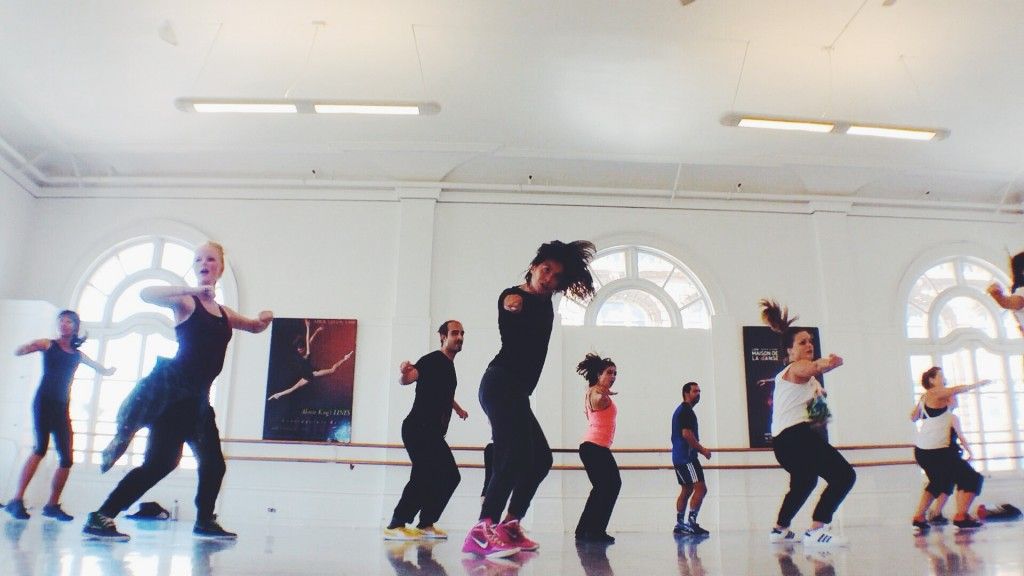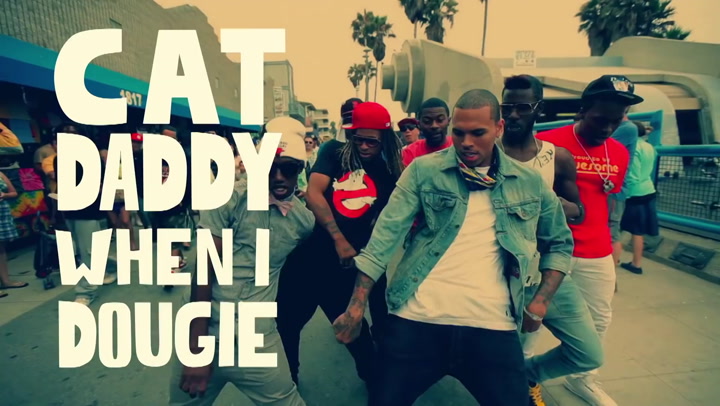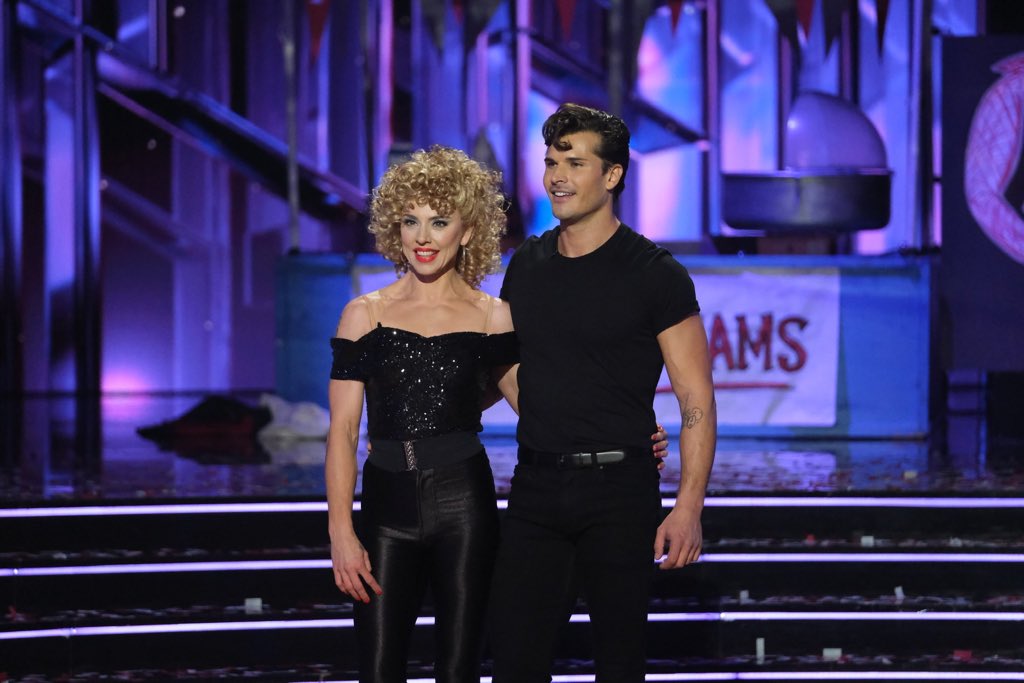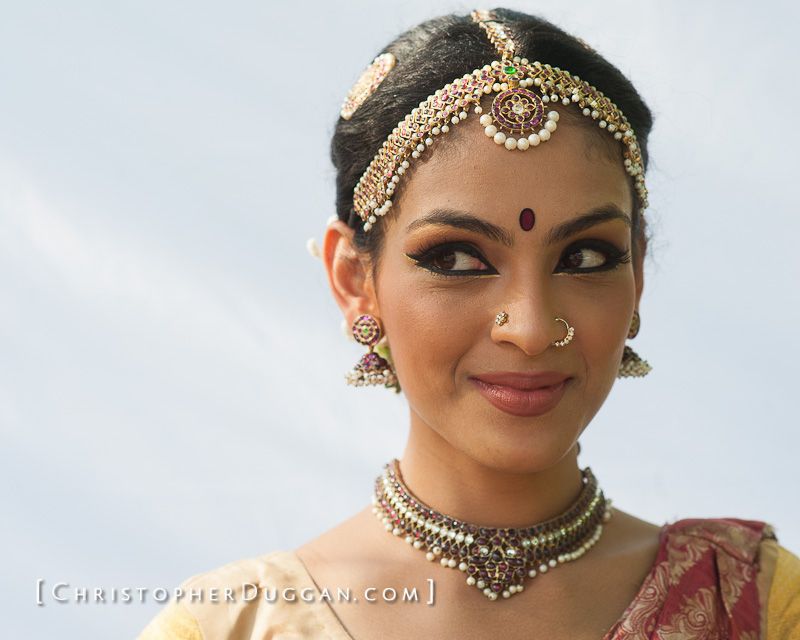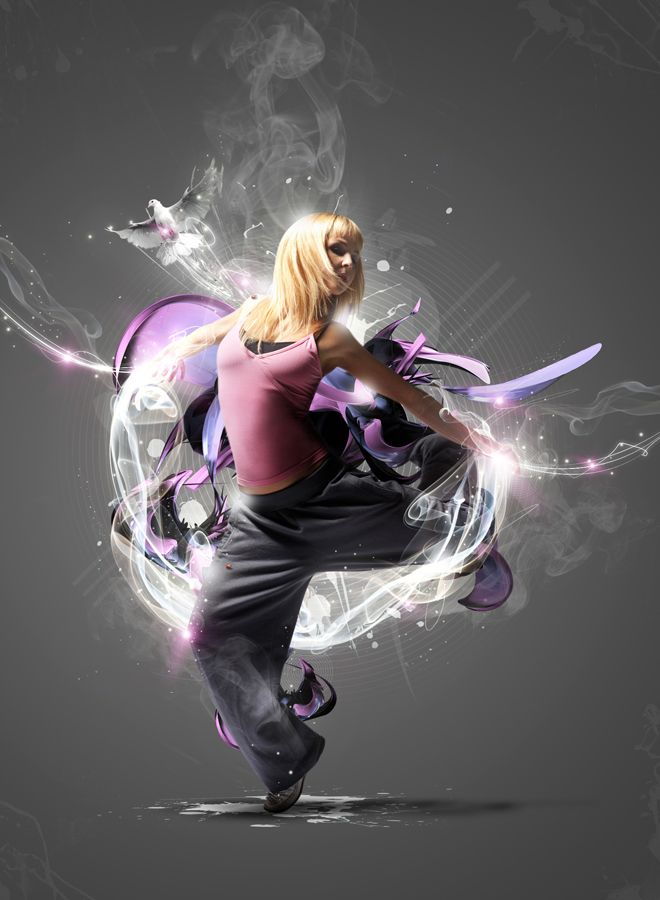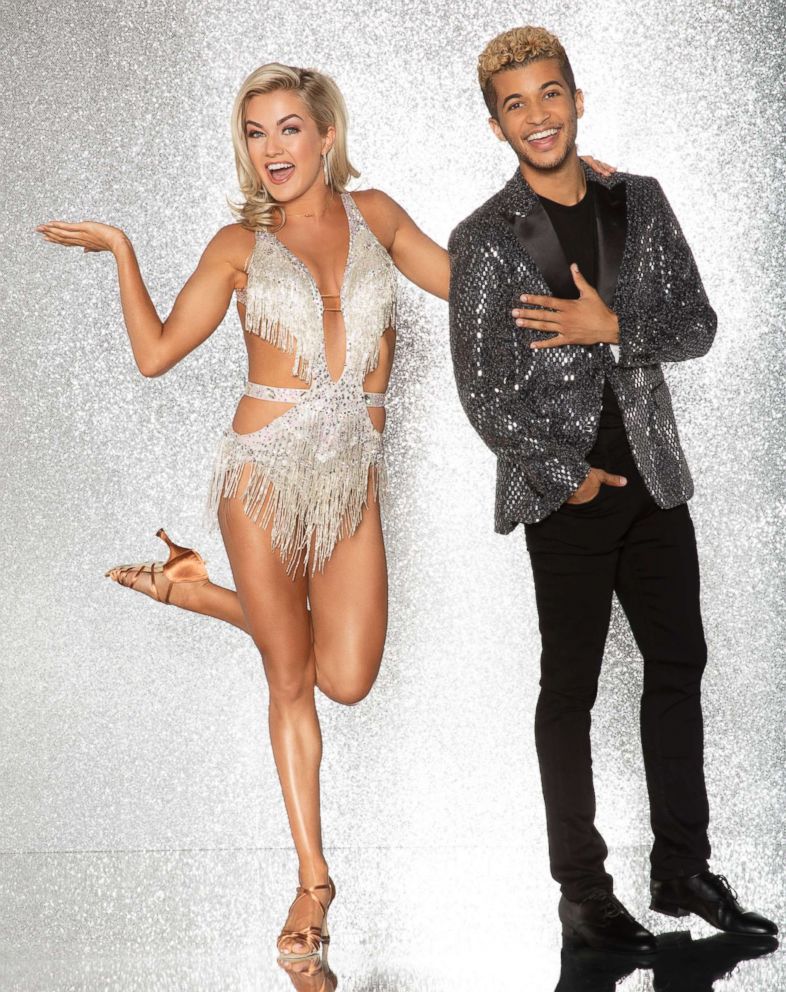How to bunny hop dance
1950s Bunny Hop Dance & 2000s Hip-Hop/Club Music Bunny HopLine Dances
Edited by Azizi Powell
Latest Update: April 15, 2022
This pancocojams post presents information about & videos of the 1950s American novelty dance called "the Bunny Hop". This post also presents information about and videos of the Hip-Hop "Bunny Hop" line dances that are performed to the 2002 Da Entourage record as well as information about and videos of dances that are performed to DJ Lilman's 2012 club music "Bunny Hop" record.
The content of this post is presented for cultural, entertainment, and aesthetic purposes.
All content remain with their owners.
Thanks to all those who are featured in these videos, and thanks to the publishers of those videos on YouTube. Thanks also to all those who are quoted in this post.
****
INFORMATION ABOUT THE 1950s BUNNY HOP
From http://en.wikipedia.org/wiki/Bunny_hop_(dance)
"The bunny hop is a novelty dance that was created at Balboa High School in San Francisco in 1952. [1] It is a social mixer dance, sometimes also referred to as a "party" or "dance party" dance.
The dance has been generally done to Ray Anthony's big band recording of the song.[1] It was a vocal hit in 1952, and instrumentally re-recorded c. 1958...
Ray Anthony's single release of the "Bunny Hop" featured another novelty dance classic, the "Hokey Pokey" on the B side...
The dance is a variation on a conga line. Participants dance in a line, holding on to the hips of the person in front of them. They tap the floor two times with their right foot, then with their left foot, then they hop forwards, backwards, and finally three hops forward to finish the sequence, which continues throughout the tune. The first person in the line leads the group around the floor.
The Finnish dance style called jenkka has essentially the same steps. Originating from the 19th century, jenkka is actually the same dance style as the German slow tempo polka called schottische or rheinländer. It is characterised by three quick steps and a hop and is danced to music in 2/4 time. Finnjenkka, also known as letkajennkka and letkis, is one of the many variations of jenkka. Typical to it is that all the people dancing form a line and hold on to the one in front by the waist."
It is characterised by three quick steps and a hop and is danced to music in 2/4 time. Finnjenkka, also known as letkajennkka and letkis, is one of the many variations of jenkka. Typical to it is that all the people dancing form a line and hold on to the one in front by the waist."
****
VIDEOS OF 1950s BUNNY HOP
Example #1: The Bunny Hop from The Ray Anthony Show (1953)
Ray Anthony, Published on Feb 3, 2014
Ray Anthony & his orchestra perform the 1950s dance sensation known as "The Bunny Hop" on this 1953 episode of The Ray Anthony Show
****
Example #2: Alice Lon, The Lennon Sisters and The Bunny Hop
Music Maker 1979, July 28, 2019
From the Lawrence Welk Show -snip-
Here's a comment from this video's discussion thread:
B&O5300, 2019
"From a 1957 broadcast originally conducted by Ray Anthony & Orchestra.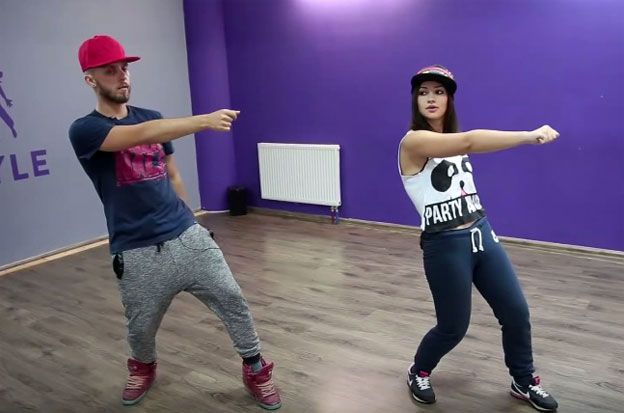 "
"
-snip-
This is another example of this film clip that was embedded in this post when it was first published.
****
Example #3: Bunny Hop
redmoose3d, Uploaded on May 1, 2008
My little sister had a "Bunny Party" for her 3rd birthday, and we all danced the Bunny Hop.
****
INFORMATION ABOUT DA ENTOURAGE'S "BUNNY HOP" RECORD
From http://www.reesefuller.com/articles/still-doing-the-bunny-hop/
"It’s been a year and a half since Da Entourage hit it big with Bunny Hop. Its latest CD, Entourage 2, was re-released on Universal Records as part of a reported $5 million deal, and it’s kept the Lafayette rap group hopping...
On the heels of the regional success of its first compact disc, Entourage 1, (Inside Acadiana: Hopping to the Top, Jan. 30, 2002), the group recently signed with Universal Records, home to the Cash Money and No Limit Record labels and acts like Master P, Juvenile, 504 Boyz and Nelly.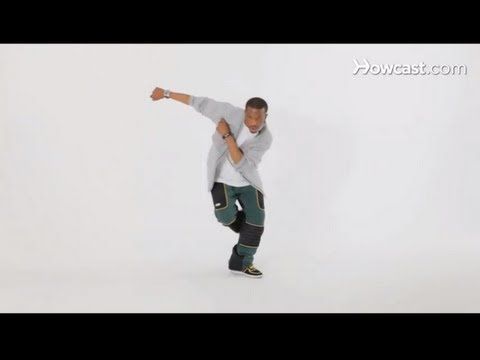 Universal recently re-released Entourage 2, which also contains “Bunny Hop,” the successful single from the group’s first CD. The disc comes in two flavors – a clean version and one with explicit lyrics...
Universal recently re-released Entourage 2, which also contains “Bunny Hop,” the successful single from the group’s first CD. The disc comes in two flavors – a clean version and one with explicit lyrics...
A lot has changed for Da Entourage since their “Bunny Hop” debuted at No. 3 on Billboard’s Hot Rap Singles Chart in January 2002, including signing a deal with Universal on Mardi Gras day in New Orleans....
Da Entourage knew it had a catchy song on its hands with “Bunny Hop,” but they realized that they needed a hook to get the song to the broadest audience possible. It’s one thing to get a radio station to play a song, but it’s another to have people crowd the dance floor when they hear the first few notes of the song.
Da Entourage devised a simple dance, appropriately called the Bunny Hop, to go along with their number. They taught it to whoever would give them the time of day. When they went to locally owned record stores to stock copies of their CD, they taught the steps to managers and customers in the stores
[Music store owner Todd] Ortego is also a disc jockey on the weekends, catering to social functions like weddings, family reunions and company parties. He says he still gets requests for “Bunny Hop,” nearly two years after its initial release. Ortego readily admits that “I’m in this small – apparently exclusive – club of people who have never done a line dance,” but he says the dance must be what keeps the requests for the song coming."
He says he still gets requests for “Bunny Hop,” nearly two years after its initial release. Ortego readily admits that “I’m in this small – apparently exclusive – club of people who have never done a line dance,” but he says the dance must be what keeps the requests for the song coming."
****
VIDEOS OF "BUNNY HOP" LINE DANCES
Editor: There are a number of ways to do "Bunny Hop" line dances to the 2002 record by Da Entourage. This post showcases a few of those ways.
Example #1: Tuskegee University bunny hop line dance
New Viral Vids, Nov 21, 2010
Tuskegee University line dancing to bunny hop 2010-2011 Caf Party -snip- Here's the only comment that is written in this video's discussion thread (given with amended spelling)
Cool Dude, 2017
"I remember doing this dance in a raggedy club called the rose down in Montgomery Alabama. The floor was packed and I remember thinking to myself this bi&&h is bout to cave in! Had so much fun!!!"
-snip-
This panocojams post originally included a 2006 video of Tuskegee [University] Students Line Dancing on the Patio the Bunny Hop (published by Ian Evans on Oct 27, 2006). That video is no longer available.
That video is no longer available.
A number of commenters wrote in that video's discussion there that this was the "old school" ["old skool"] way of doing the "Bunny Hop". It didn't seem as though those commenters knew about the "Bunny Hop" that was done as a conga-line dance.
It also appeared that commenters who added comments after 2012 were referring to Dj Lilman's record [found below in this post] as the "new school" way of dancing the "Bunny Hop".
-snip-
Although this video is no longer available, I kept it in this post because these notes may be of some cultural/historical interest.
****
Example #2: Bunny Hop Line dance
cojacque, Uploaded on Aug 15, 2009
Reception shananigans cont'd
****
Example #3: Bunny Hop Line Dance
howtolinedance, Uploaded on Jul 7, 2011
.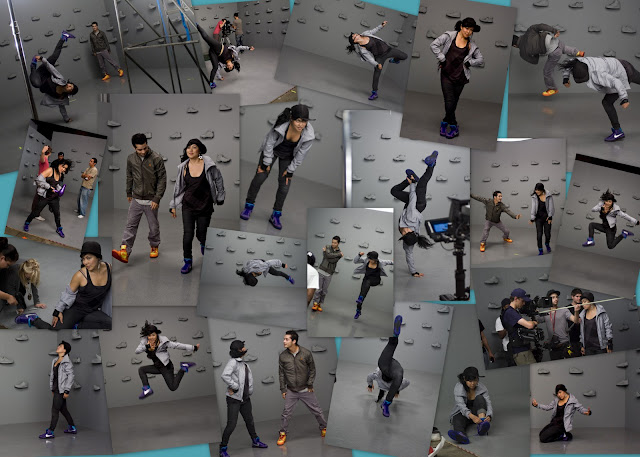 ..This is a very simple warm up line dance workout called The Bunny Hop Line Dance. Have fun doing it. When it speeds up, you can get a serious workout on.
..This is a very simple warm up line dance workout called The Bunny Hop Line Dance. Have fun doing it. When it speeds up, you can get a serious workout on.
****
Example #4: The Bunny Hop Line Dance - INSTRUCTIONS
Steph's Line Dancing, Published on May 1, 2012
....There are quite a few versions out there but This is the EASIEST version i know
Song: Bunny Hop - Da Entourage
-snip-
In response to a comment that that's not how to do this dance, the video uploader wrote:
"there are at LEAST 7-8 different versions of this dance.... this is just one of them..."
-snip-
Here are two other comments from the video's discussion thread:
Kiki Williams, 2012
..."This song is by Da Enrouage... I've never seen anyone Bunny Hop like this before.. it seems too easy. I learned how to Bunny Hop in New Orleans and we always danced to this version of the song.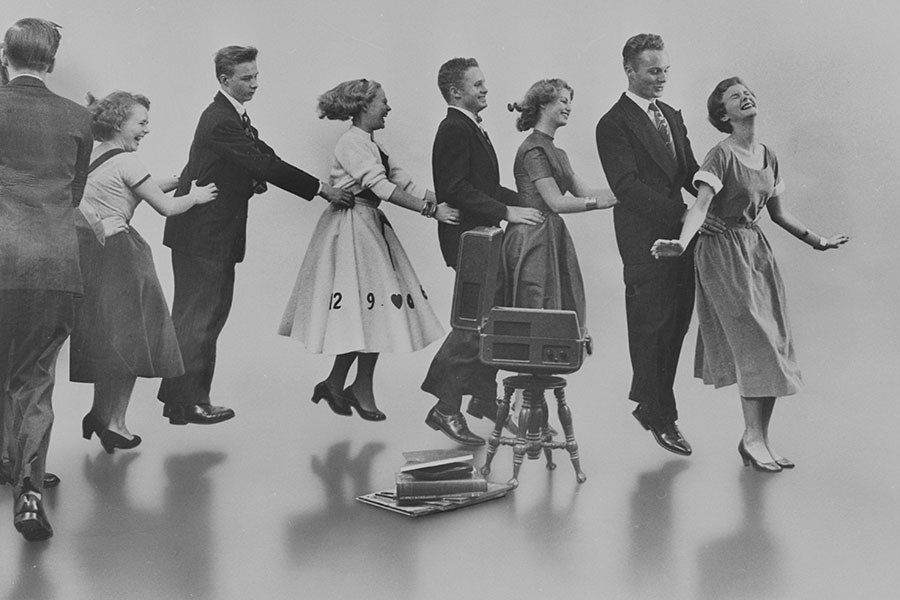 ..."
..."
**
Mark Hebert, 2013
"this song play at almost all the clubs and receptions down here in the New Orleans area and i see many versions of the dance...."
****
INFORMATION ABOUT DJ LILMAN'S "BUNNY HOP" RECORD
DJ Lilman's "Bunny Hop" Brick City club music record was recorded in 2012. Here's information about this type of club music
From http://en.wikipedia.org/wiki/Brick_City_club
"Brick City Club Music (or Jersey club[1]) is a version of Baltimore club music from Newark, New Jersey popularized by DJ Tameil (Formerly Anthrax), DJ Tim Dolla, Mike V, DJ Black Mic (Brick Bandits Crew) ; in the early/mid 1990s to the 2000s.[2] It was then abandoned by DJ Tameil after many new producers began making music "without his permission," as Tameil has said numerous times, thus "ruining the genre."... DJ Lilman now is the most known DJ making Brick City Club hits. His music videos on Youtube has received more than 100,000 views...
Though presently it is not as popular as Baltimore club, Brick City club is still popular amongst the Essex, Hudson, Somerset, Middlesex, and Union county areas of New Jersey. "...
"...
-snip-
Here's information about "Baltimore Club music"
From http://en.wikipedia.org/wiki/Baltimore_club
"Baltimore club, also called "Bmore Club", "Bmore House" or simply "Bmore" is a breakbeat genre. A blend of hip hop and chopped, staccato house music, it was created in Baltimore, Maryland, United States in the late 1980s by 2 Live Crew's Luther Campbell, Frank Ski, Big Tony (or Miss Tony), Scottie B. and DJ Spen.[1]
Baltimore club is based on an 8/4 beat structure, and includes tempos around 130 beats per minute.[2][3] It combines repetitive, looped vocal snippets similar to trap, ghetto house and ghettotech. These samples are often culled from television shows such as Sanford and Son and SpongeBob SquarePants,[3] though can also be simple repeated calls and chants. The instrumental tracks include heavy breakbeats and call and response stanzas similar to those found in the go-go music of Washington, D.C"....
****
VIDEOS OF DJ LILMAN'S "BUNNY HOP"
These videos are presented in chronological order with the oldest dated videos given first.
Example #1: DJ LILMAN FT KSHIZ - BUNNY HOP (MUSIC VIDEO)
wiztvpartyvideos . Published on Jun 16, 2012
BRAND NEW DANCE NEW JERSEY CLUB MUSIC DJ LILMAN FT KSHIZ - BUNNY HOP FILMED AT EDITED BY WIZTV
-snip-
The "I Love Jersey City" t-shirt wore by one of the dancers refers to a city in Northern New Jersey. Some of these dancers are "sportin a sag" [wearing sagging pants that show their boxer shorts.] That's a style from the 1980s that is still worn by some young males today although it seems to me that it's less prevalent than it was back then.
****
Example #2: Bunny Hop ( Dj Lilman Feat K-Shiz ) [ Terrence ]
TerryTEEVEE, Published on Jun 24, 2012
Might Be Alil late on This Video But I Do Whatever I Want ^__^
****
Thanks for visiting pancocojams.
Visitor comments are welcome.
how to do the bunny hop dance
TikTokUpload
For You
Following
theronniewilson
Ronnie Wilson
Come Bunny Hop with me! @Ronnie Wilson #linedance #dancetutorial #bunnyhop #bunnyhopdance
498 Likes, 8 Comments. TikTok video from Ronnie Wilson (@theronniewilson): "Come Bunny Hop with me! @Ronnie Wilson #linedance #dancetutorial #bunnyhop #bunnyhopdance". Bunny Hop (Tutorial). Bunny Hop - Radio Edit.
10.7K views|
Bunny Hop - Radio Edit - Da Entourage
princxssglitterhead
princessglitterhead
Someone said 🐰 so I learned fast 😁#hiphop #hippop #popping #bunny #bunnyhop #tutorialdance #foryou #fypシ #fypsounds #🐰 #filthyanimal #lovers
1.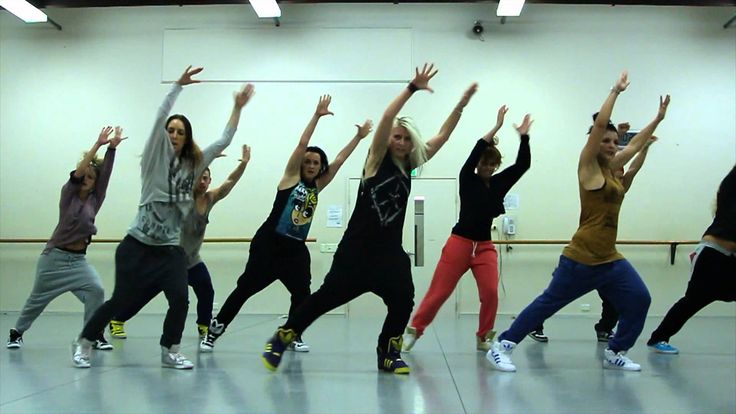 4K Likes, 23 Comments. TikTok video from princessglitterhead (@princxssglitterhead): "Someone said 🐰 so I learned fast 😁#hiphop #hippop #popping #bunny #bunnyhop #tutorialdance #foryou #fypシ #fypsounds #🐰 #filthyanimal #lovers". Stop using my video damn.
4K Likes, 23 Comments. TikTok video from princessglitterhead (@princxssglitterhead): "Someone said 🐰 so I learned fast 😁#hiphop #hippop #popping #bunny #bunnyhop #tutorialdance #foryou #fypシ #fypsounds #🐰 #filthyanimal #lovers". Stop using my video damn.
74.4K views|
Stop using my video damn - you ugly as hellll
dancewithscoop
Dancing Momma
Reply to @porscheee_062708 I hope this helps! Dolphin/BunnyHop tutorial! #tutorial #dolphin #danceclasswithmiranda
3.6K Likes, 76 Comments. TikTok video from Dancing Momma (@dancewithscoop): "Reply to @porscheee_062708 I hope this helps! Dolphin/BunnyHop tutorial! #tutorial #dolphin #danceclasswithmiranda". original sound.
47K views|
original sound - Dancing Momma
itsvictorxx
victor
Reply to @notsarahmarie Highly requested tutorial on the 🐬#Howto #VibeZone #foryoupage #learn
488.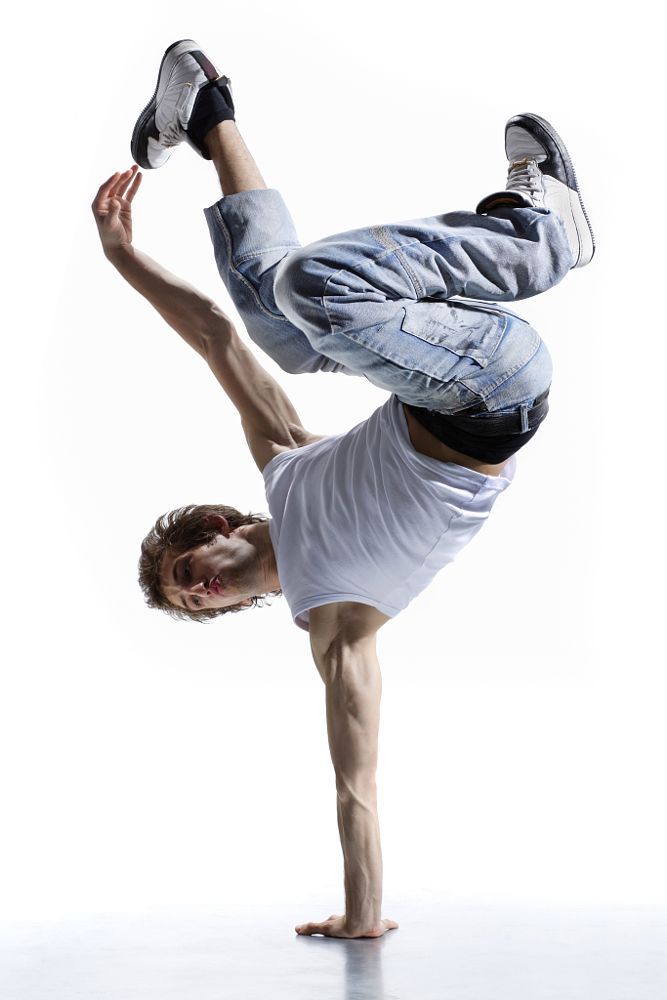 2K Likes, 9.8K Comments. TikTok video from victor (@itsvictorxx): "Reply to @notsarahmarie Highly requested tutorial on the 🐬#Howto #VibeZone #foryoupage #learn". Step 1: Body roll | Step 2: Bunny hop | Step 3: Put it together and go offfff | .... original sound.
2K Likes, 9.8K Comments. TikTok video from victor (@itsvictorxx): "Reply to @notsarahmarie Highly requested tutorial on the 🐬#Howto #VibeZone #foryoupage #learn". Step 1: Body roll | Step 2: Bunny hop | Step 3: Put it together and go offfff | .... original sound.
3M views|
original sound - Datkenziebro
callum.grant7
Callum Grant
Mum was like what in the hell 🤣 #foryoupage #viral #comedy #bunnyhop #dance #trend
26.1K Likes, 163 Comments. TikTok video from Callum Grant (@callum.grant7): "Mum was like what in the hell 🤣 #foryoupage #viral #comedy #bunnyhop #dance #trend". quincynsb go daddy go.
158.1K views|
quincynsb go daddy go - J’Quincy Boykins🐺
hotwave_uk
HOTWAVE
Easy to learn rabbit dance#fat #hotwave #slim
9. 6K Likes, 42 Comments. TikTok video from HOTWAVE (@hotwave_uk): "Easy to learn rabbit dance#fat #hotwave #slim". original sound.
6K Likes, 42 Comments. TikTok video from HOTWAVE (@hotwave_uk): "Easy to learn rabbit dance#fat #hotwave #slim". original sound.
203K views|
original sound - HOTWAVE
thisisntpablo
Pablo Tamayo
The toilet said 👁👄👁 also why is my body like that bro I need a therapist
3.9K Likes, 30 Comments. TikTok video from Pablo Tamayo (@thisisntpablo): "The toilet said 👁👄👁 also why is my body like that bro I need a therapist". How to do the bunny hop. original sound.
28.2K views|
original sound - Pablo Tamayo
krausy6
Krausy
Reply to @killianmc69 how to bunny hop in under a minute #streettrials #trialsbiker #streettrial #trials #mtb #bunnyhop #howtobunnyhop
5. 1K Likes, 63 Comments. TikTok video from Krausy (@krausy6): "Reply to @killianmc69 how to bunny hop in under a minute #streettrials #trialsbiker #streettrial #trials #mtb #bunnyhop #howtobunnyhop". 50 second bunny hop tutorial . original sound.
1K Likes, 63 Comments. TikTok video from Krausy (@krausy6): "Reply to @killianmc69 how to bunny hop in under a minute #streettrials #trialsbiker #streettrial #trials #mtb #bunnyhop #howtobunnyhop". 50 second bunny hop tutorial . original sound.
88.4K views|
original sound - Krausy
maysyoga_
maysyoga_
How to #bunnyhoptohandstand 👁🤸🏽♂️ These two tips are my favorite for helping people nail this tricky entry! #handstandtip #handstandtutorial #bunnyhopchallenge #viral #fyp #yogatutorial #yogatip
TikTok video from maysyoga_ (@maysyoga_): "How to #bunnyhoptohandstand 👁🤸🏽♂️ These two tips are my favorite for helping people nail this tricky entry! #handstandtip #handstandtutorial #bunnyhopchallenge #viral #fyp #yogatutorial #yogatip".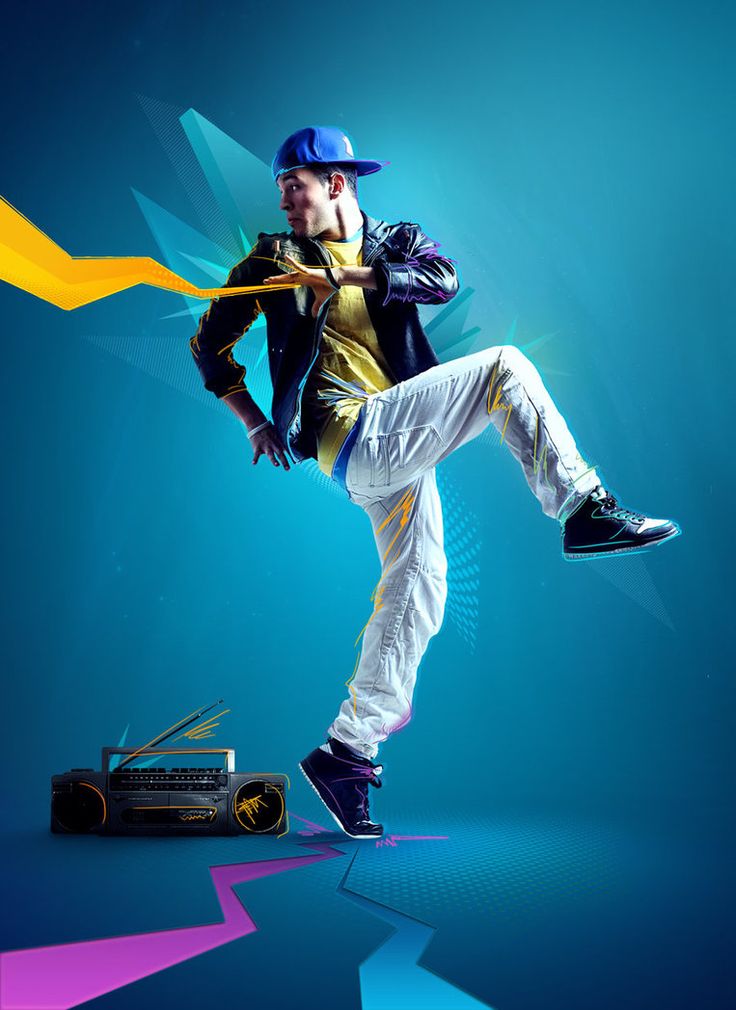 HOW TO | BUNNY HOP TO HANDSTAND | Shoulder alignment is key! | .... Life Goes On.
HOW TO | BUNNY HOP TO HANDSTAND | Shoulder alignment is key! | .... Life Goes On.
11.8K views|
Life Goes On - Oliver Tree
.sqxirrxl
«•´ 𝔰𝔮𝔲𝔦𝔯𝔯𝔢𝔩 `•»
Have fun learning! #Evade #Roblox #bug #Desert #evaderoblox #robloxFyp #bots
TikTok video from «•´ 𝔰𝔮𝔲𝔦𝔯𝔯𝔢𝔩 `•» (@.sqxirrxl): "Have fun learning! #Evade #Roblox #bug #Desert #evaderoblox #robloxFyp #bots". Detailed tutorial on how to bunny-hop | First, you need to run and jump all the time, like this | Then try to turn your camera to left and right, when turning left hold A until you land, when right then D | .... dźwięk oryginalny.
2049 views|
dźwięk oryginalny - «•´ 𝔰𝔮𝔲𝔦𝔯𝔯𝔢𝔩 `•»
Encyclopedia of dance: Swing
Jive and Charleston, rock and roll and boogie-woogie - these and many other dances are the "children" of swing, the melodies and rhythms of which will enchant, envelop with their passion and sensuality.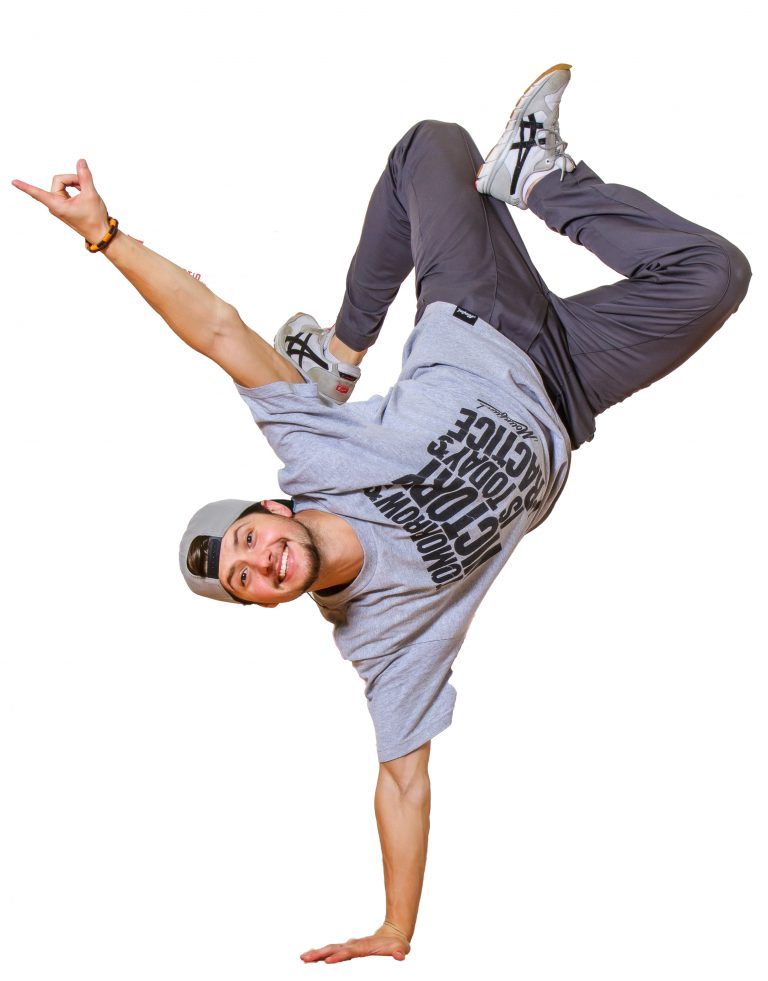
Swing dance developed in parallel with music in the 20s-40s of the 20th century. The term "swing" covers several dances of the corresponding direction, as well as music, in this style. In today's world, many "swing" dances are performed to modern music that fits the tempo and rhythm.
History of Swing
The first forms of swing emerged in the late 19th and early 20th century in the southern United States. The racial laws of Jim Crow led many African Americans from the southern United States to move to the north, where the treatment of Africans was more tolerant. Together with them they brought their dance and musical culture. The art of the white and African American population of America was mutually enriched, and, as a result, new styles and genres appeared. Thus, each city could have its own version of swing compositions, for example, Black Bottom or Rhythm Tap dance (tap).
The term "swing" was first used in 1911 to characterize the Texas Tommy dance, during which the partner "spun" the partner, which is reflected in the name "swing".
Since the 20s of the 20th century, the dance has spread in America and Europe, actively absorbing the national characteristics of the country in which it was performed. Therefore, in the modern world of dance there are many varieties of swing - from slow jazz compositions to fast ones.
What is swing?
Swing-oriented several dancing:
- Lindi-hop
- Balboa Bigi 9000 9000 woogie
- West Coast Swing and many other dances.
Swing is based on African American folklore, with a characteristic syncopated rhythm in the music. Since there are a lot of types and forms of swing, and all of them have characteristic differences, this also affected the music to which these dances are performed. So, Charleston is traditionally danced to ragtime, lindy hop to swing (jazz), country swing to country music, hip-hop swing to hip-hop. Swing actively absorbed and continues to absorb local features, even various clubs, DJs and coaches brought their own vision of dance compositions to the dance.
Swing actively absorbed and continues to absorb local features, even various clubs, DJs and coaches brought their own vision of dance compositions to the dance.
Swing dances are usually paired. There is close contact between partner and partner, although in some events individual space is allowed to demonstrate one's skill. Many types of swing, such as rock and roll, are replete with acrobatics.
Types of swing and their features
Texas Tommy is considered to be the forerunner of swing. After analyzing the movements of this dance and the movements of the Lindy Hop, the first dance in the swing style, their complete identity was noticed, with the exception of a few steps. Later, Texas Tommy incorporated many elements from the dances of the Grizzly Bear, Turkey Trot, Bunny Hop and others, in which the dance steps parodied animal movements.
In the 10-20s of the 20th century, Charleston, a dance that emerged from the African American environment, gained popularity. This dance was performed both on stage and in clubs. In the late 1920s, another dance originated from the Charleston - Breakaway, which included elements of Texas Tommy and Lindy Hop. Lindy hop peaked in popularity in the late 1930s and early 1940s. This dance is considered the most developed and complex form of swing. A feature of Lindy Hop is the possibility of improvisation and rhythmic flexibility, as well as the ability to perform under any jazz or blues music.
This dance was performed both on stage and in clubs. In the late 1920s, another dance originated from the Charleston - Breakaway, which included elements of Texas Tommy and Lindy Hop. Lindy hop peaked in popularity in the late 1930s and early 1940s. This dance is considered the most developed and complex form of swing. A feature of Lindy Hop is the possibility of improvisation and rhythmic flexibility, as well as the ability to perform under any jazz or blues music.
Balboa - swing dance on an 8-part basis. The peculiarity of this dance is fast foot movements and close contact between partners. The dance is performed to fast jazz music, tempo from 180 to 320 beats per minute.
Among the swing varieties of the 30s and 40s, one can note the Carolina shag, Collegiate shag, St. Louis Shag and others.
The forties and fifties also brought their own forms and styles of swing. Boogie-woogie is still popular in Europe. This dance is very similar to East Coast Swing and is performed to boogie-woogie and jump-n-jive.
Since the 1930s, jive has gained popularity among young people. This word in translation means "talk, nonsense." Now jive is part of the Latin American ballroom dance program and is very different from swing in terms of performance, although it uses the same dance combinations.
Swing is traditionally divided into "ballroom" and "street". In ballroom swing there is a certain set of figures that must be performed on stage or in competitions. Street swing is performed in clubs, at parties, on the streets. It has great freedom in the choice of movements and a tendency to develop and modify. 9The Big Apple It originated in South Carolina in 1936 and quickly became incredibly popular - there were hundreds of clubs all over America in which only the Big Apple danced. The caller stands in the center of the circle of dancers and calls out moves from Charleston and stomp off to truckin'.
Balboa is a hybrid of Collegiate Shag, popular at the end of 1920s and Arthur Murray Shag. Formed during the famous dance nights at the Balboa Pier in Newport Beach, California. A group of regulars began to call themselves the Balboa Dancers, and the dance began to be seen as a new form, although in essence it is still the same Shag. Balboa is played mainly in a closed position and has an 8-count basis. The popularity of dance was facilitated by the rules of many ballrooms where breakaways were prohibited (even such large ballrooms as the Los Angeles Paramount adhered to this rule). The perfect dance for a packed dance floor.
Formed during the famous dance nights at the Balboa Pier in Newport Beach, California. A group of regulars began to call themselves the Balboa Dancers, and the dance began to be seen as a new form, although in essence it is still the same Shag. Balboa is played mainly in a closed position and has an 8-count basis. The popularity of dance was facilitated by the rules of many ballrooms where breakaways were prohibited (even such large ballrooms as the Los Angeles Paramount adhered to this rule). The perfect dance for a packed dance floor.
Boogie Woogie was originally the name of a style of piano playing. In 1938, a dance under this name was introduced by Whitey's Lindy Hoppers at the Cotton Club at a performance by Cab Calloway. For quite some time, "boogie-woogie" was called Lindy Hop, performed at a fast pace. After the Second World War, the Europeans named this term one of the dances of the Jiva subgroup.
Charleston - a dance with African-American roots, combining one-step and foxtrot, spread throughout America in 191920s, after being featured in the 1923 Broadway play Runnin' Wild to the song "Charleston". By 1925, the Charleston was being danced everywhere - its popularity was so great that even for waitresses, one of the requirements for employment was the ability to dance the Charleston.
By 1925, the Charleston was being danced everywhere - its popularity was so great that even for waitresses, one of the requirements for employment was the ability to dance the Charleston.
East Coast Swing is a simpler form created in 1942 by the two major dance teacher associations in America. A hybrid of foxtrot and syncopated two-step, based on a 6-count.
Hollywood Style Lindy Hop is a modern variation of the Lindy Hop, differing from the classic by having both 8-count and 6-count, representing a mixture of Lindy Hop and West Coast Swing. It was created by Sylvia Sykes and Jonathan Bixby based on the choreography of 1940s Hollywood films.
Imperial Swing is a St. Louis variation of the West Coast Swing.
The Jamaica is a New Orleans variation of the West Coast Swing.
Jitterbug is a collective name for all swing dances that came into use in the early 1940s.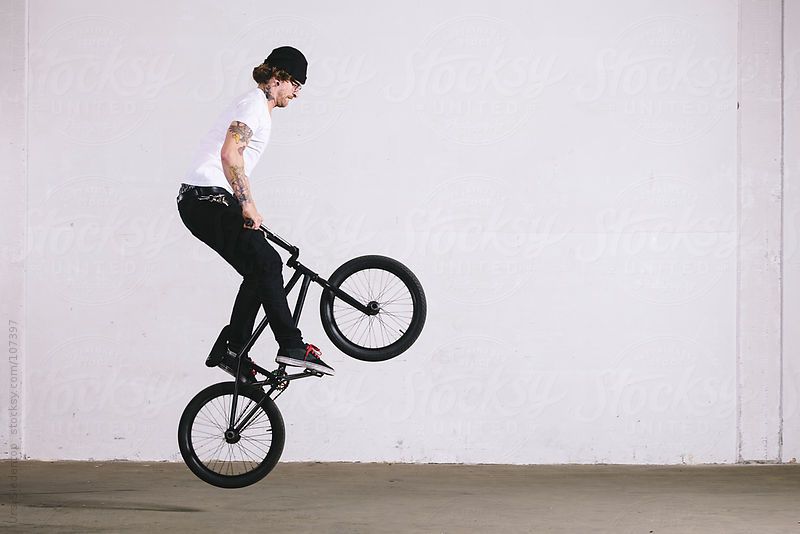 The term itself initially had a rather humiliating meaning - in the American slang of that period, jitterbug meant "pale spirochete." In the 1930s, that was the name of any bad white dancer, that's what Benny Goodman called the dancers at one of the concerts, but the newspapers, who were not familiar with the slang meaning of the term, picked it up.
The term itself initially had a rather humiliating meaning - in the American slang of that period, jitterbug meant "pale spirochete." In the 1930s, that was the name of any bad white dancer, that's what Benny Goodman called the dancers at one of the concerts, but the newspapers, who were not familiar with the slang meaning of the term, picked it up.
The Jitterbug Stroll is a modern variation of Shim Sham created by Ryan Francois. Includes 90 degree turns between sections.
Jive is a European variation based on East Coast Swing, triple step changed to single step. The term comes from the title of Cab Calloway's book Jive Talk, published at the same time. In this case, Europeans' ignorance of American slang is to blame - "jive" means, to put it mildly, "nonsense". At the moment, he has a steady set of movements and does not allow improvisation.
Lindy is a modern version of Lindy Hop. Swedish invention. Includes both
Swedish invention. Includes both
Lindy Hop is the first and main swing dance that gave life to all subsequent variations. Lindy Hop is visualized jazz. Thanks to the breakaway (swingout), there is room for improvisation and spontaneous creativity. Lindy Hop has a very loose base on which thousands of variations are built and the ability to create new movements. Newcomers are usually drawn to crazy and delicious aerials, but the true soul of Lindy Hop lies in freedom - every "mistake" can become a new movement.
New Yorker is a combination of West Coast Swing and East Coast Swing created in the 1950s by Marge and Gower Champion.
Savoy Style Lindy Hop is sometimes called the classic Lindy Hop. It is impossible to seriously talk about the “Savoy style”, because even the professional dancers of the Savoy Ballroom had very different styles.
Push (Dallas Push) is a Texas variation of West Coast Swing.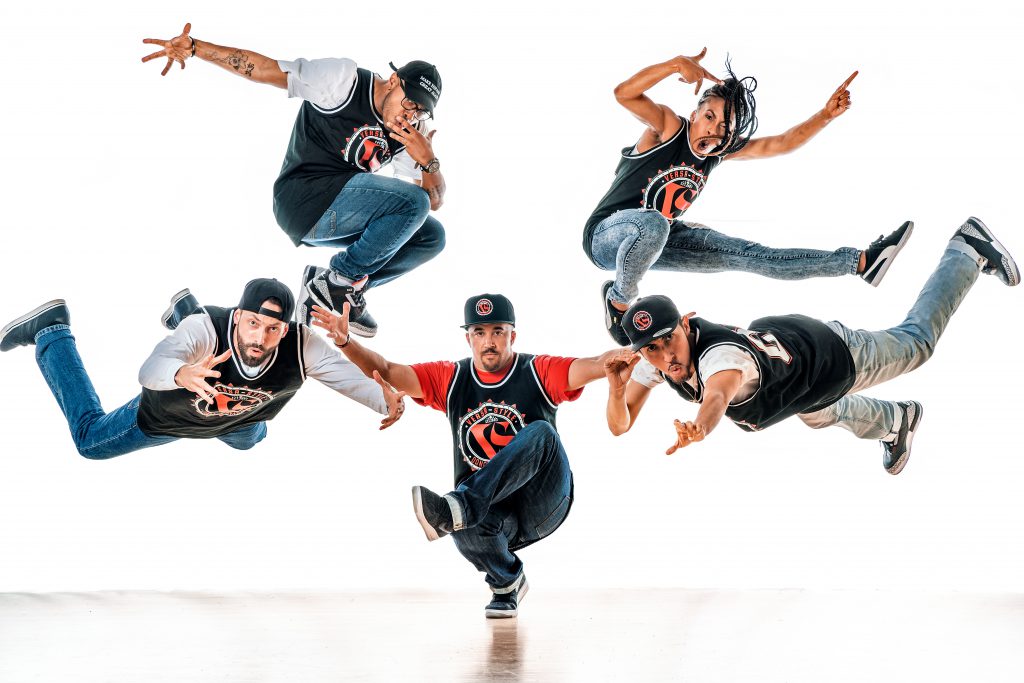
Shag - originates from the southern states of America and has many forms. Dancing in a closed position.
Arthur Murray Shag is a 1931 revision of the Collegiate Shag by Arthur Murray.
Carolina Shag - A mixture of Collegiate Shag and Charleston, the latest form - originated in the 1930s in South Carolina.
Collegiate Shag - New Orleans uniform, was very popular among students.
Louis Shag - more like a Charleston, ideal for fast paced.
Shim Sham - "collective" dance, originally created for Broadway shows, was picked up and developed by Whitey's Lindy Hoppers dancers, including a variety of Lindy Hop moves - stomp, boogie back, Shorty George. It is performed in a line, to one wall, the leader (caller) shouts out the movements. The most enjoyable part is when the host says "Swing!" - at this point, you should grab the nearest partner and dance the Lindy Hop until the leader says "Stop!" The classic track for Shim Sham is "Tuxedo Junction".
Swing Rueda is a modern hybrid of the Big Apple and Salsa Rueda popular in the 1950s. Created by Elaine Hewlett and Jeff Miller.
West Coast Swing (Dean Collins Style) is a Lindy Hop variation created in the mid-1930s by dancer Dean Collins. The modern version incorporates many of the hustle moves and is very different from Collins' original version.
Whip (Houston Whip) The is another Texas variation of the West Coast Swing.
Popular types and styles of dance: all about modern choreography
Dance is the art of self-expression, an opportunity to feel the harmony between body and soul. In dance, you can improvise, create and enjoy the movement. And of course, this is a way to keep yourself in excellent physical shape. Modern choreography is very diverse - from simple repetitive steps to technically complex movements at a cardio pace that require special training. Dance studios offer a variety of activities - from medieval dance lessons to twerk and strip dancing. What are the styles of dance, what is now in trend - I figured out #PokuponBlogTeam, and at the same time prepared discounts up to 90% for subscriptions to dance studios in your city.
Dance studios offer a variety of activities - from medieval dance lessons to twerk and strip dancing. What are the styles of dance, what is now in trend - I figured out #PokuponBlogTeam, and at the same time prepared discounts up to 90% for subscriptions to dance studios in your city.
- Ballet and its modern forms
- jazz
- Folk dances of the world
- Ball dancing
- Street Dance: Dancing Street
- Dancing styles 900
- Polonaise is a pair dance based on bows of men and curtsy of women.
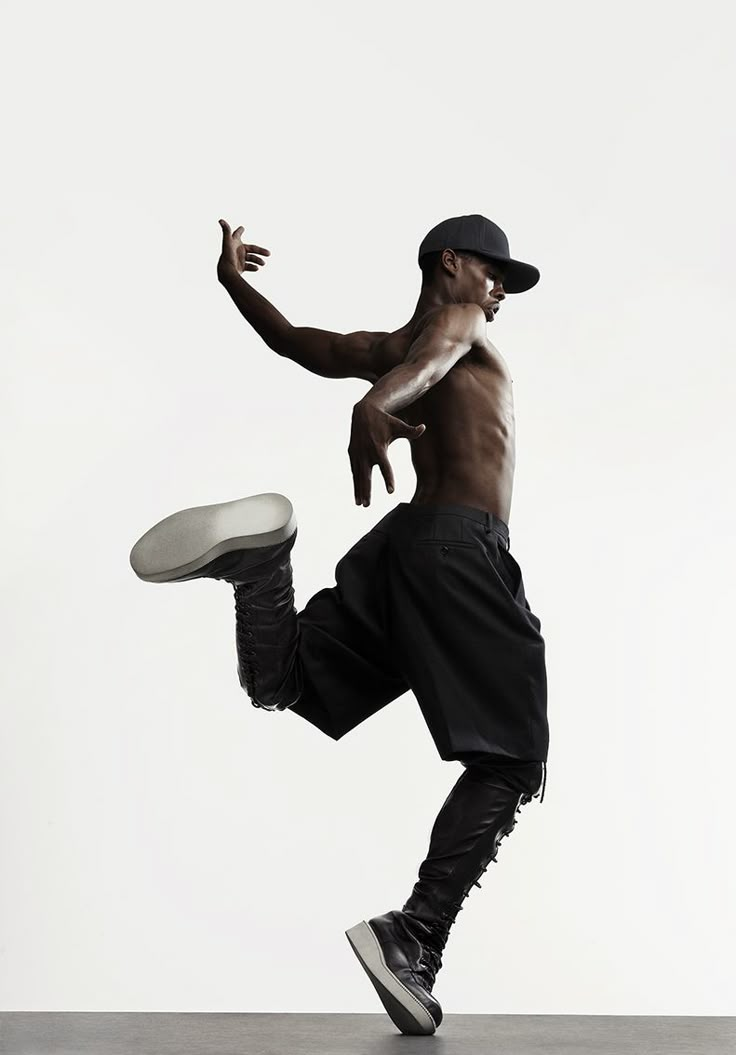 As a rule, the Polonets opened the royal balls.
As a rule, the Polonets opened the royal balls. - Angles was popular throughout Europe from English palaces to St. Petersburg. In the dance, the men passed from partner to partner, a certain element of courtship of gentlemen for ladies was assumed.
- Minuet is a rather complex slow and long pair dance with many combinations and connections. As a rule, it was danced at the beginning of the ball.
- Grosvater - a cheerful, perky and lively dance followed the metuet. The couples randomly moved around the hall and even beyond it, performing simple obligatory movements.
- Polka is a compulsory dance at the ball, derived from the folk dances of Central Europe. The polka is danced at a fast pace, barely managing to move the steps with their feet. It is believed that even the name of the dance comes from the Czech word "půlka" - "half a step."
- Hungarian - the basic movements for this dance were taken from the Hungarian Czardas dance. It is also called "gypsy dance".
 The Hungarian woman, like the Polish Krakowiak, was included in the supplemented program of the ball.
The Hungarian woman, like the Polish Krakowiak, was included in the supplemented program of the ball. - Quadrille - the dance included many steps and transitions and was divided into several parts, between which there was a break so that the couples could rest.
- Mazurka is the most important dance at the ball, to which the ladies were invited in advance, and by the time of the dance all the couples were already formed. After performing a quick mazurka with many kicks and jumps, the gentlemen escorted the ladies to the table and kept them company at dinner.
- Padequatre is a pair dance consisting of waltz movements and sliding steps. Padecater had its own production and was not included in the compulsory dances at the ball. Later, this term was borrowed into ballet, denoting the dance of four performers.
- Gavotte is a moderate light dance that originated from French folk dances. In the first part, the gentleman supports the lady by the waist and the couples follow the chain in a circle, performing movements synchronously: steps, turns, bows.
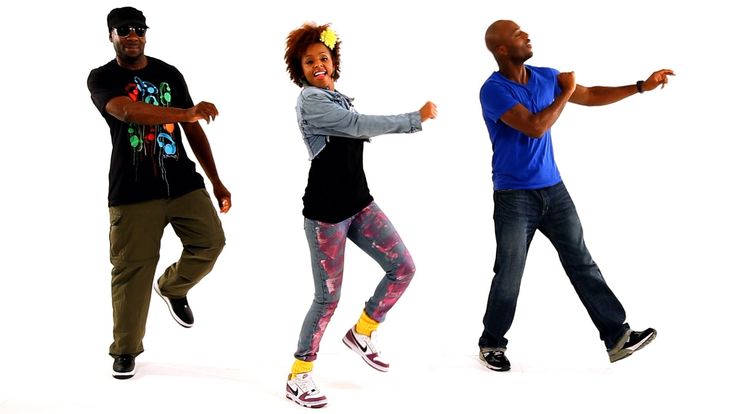 The second part is usually waltzing.
The second part is usually waltzing. - Cotillion is a casual, cheerful dance in which couples chatted and joked with each other. The cotillion was performed at the end of the ball, after which the gentlemen were obliged to take the ladies home or to another place they wished.
Classical ballet
Originated in the 16th century as choreographic miniatures in opera performances. Later it became an independent type of theatrical art. The main expressive means of ballet is classical dance. This is a whole system of geometrically clear, well-balanced movements, precise observance of the positions of the arms, legs, and body. A ballet performance is nothing more than a theatrical performance with a certain plot expressed through choreography. Not only dance steps are important, but also pantomime, with which the performers convey the emotions of their characters.
In modern dance schools, everyone can try on a ballet tutu and pointe shoes. It is optimal to start doing ballet from 6-7, or even from 10 years old. At this age, the child is already more demanding of himself and is ready to accept the methods of classical dance. At an earlier age, it is advisable to take the baby to simpler dance classes with teaching in the form of a game, acquaintance with rhythms and music.
Jazz-modern
The 20th century style of dance originating in Germany and the USA was an attempt to abandon the canonical ballet movements. It mixes ballet classics, jazz improvisation and modern street choreography at that time, using completely different rhythms and themes for productions.
Contemporary
Contemporary, or modern stage dance, also originates from the rejection of classical ballet canons. This is a search for new ways to express thoughts and emotions in dance. Kontemp brought Eastern Buddhist motifs to the dance. In addition to movements, some techniques are also built on breathing and working with consciousness. He is characterized by "work on the floor", often the performers dance barefoot.
This is a search for new ways to express thoughts and emotions in dance. Kontemp brought Eastern Buddhist motifs to the dance. In addition to movements, some techniques are also built on breathing and working with consciousness. He is characterized by "work on the floor", often the performers dance barefoot.
Jazz
This style of modern dance is the result of a fusion of European and African cultures. Developed in parallel with the music of the 20s-40s of the twentieth century. It is based on improvisation, sense of rhythm and high skill of the dancer. Jazz includes a wide range of dance styles.
Cakewalk
Today, cakewalk can only be seen in theatrical productions or films, but at the beginning of the 20th century it was an absolute breakthrough. This African American dance became the progenitor of all jazz trends in choreography. In English, the dance is called "cake walk" - "a walk for the pie", which is associated with the custom of rewarding the best dancers with a pie.
This African American dance became the progenitor of all jazz trends in choreography. In English, the dance is called "cake walk" - "a walk for the pie", which is associated with the custom of rewarding the best dancers with a pie.
Boogie-woogie
During World War II, there were many American soldiers in Europe who brought their customs and culture with them. Boogie-woogie originated from Lindy Hop and was performed solo or in pairs with rock and roll. Until now, the first is more popular in Europe, and the second in the USA.
Tap or tap dance
Translated from English, “step” means “step”. Tap dance is a dance based on tapping the rhythm with shoes. If the founders of tap dance pounded on the oak floor with a hard sole, then modern tap shoes have a metal toe and heel heels for a more sonorous sound.
Tap dance is a dance based on tapping the rhythm with shoes. If the founders of tap dance pounded on the oak floor with a hard sole, then modern tap shoes have a metal toe and heel heels for a more sonorous sound.
Charleston
This dance was performed by girls to make fun of Prohibitionists in the USA. Having African-American roots, the Charleston was performed to jazz that was fashionable at that time. The dance was considered immoral until it was shown on Broadway, where it earned a lot of fans and the dance frenzy was unstoppable.
Lindy Hop
Lindy Hop developed with jazz music. Black musicians traveled on buses from state to state, blowing up dance floors. The fans could no longer dance like they used to, the rhythms and tempo were not the same at all. Thus, the movements of African folk dances were added to the dry step, which fully corresponded to the free and liberated spirit of swing dances.
Black musicians traveled on buses from state to state, blowing up dance floors. The fans could no longer dance like they used to, the rhythms and tempo were not the same at all. Thus, the movements of African folk dances were added to the dry step, which fully corresponded to the free and liberated spirit of swing dances.
Read also: How to learn to dance
Folk dances of the world
Ukrainian hopak
Military dance of the Zaporozhye Cossacks with many complex jumps, squats, leg swings and spinning. Initially, hopak was performed exclusively by men. The Cossacks stood in a circle, in the center of which two brothers competed in a dance, demonstrating speed, agility and flexibility.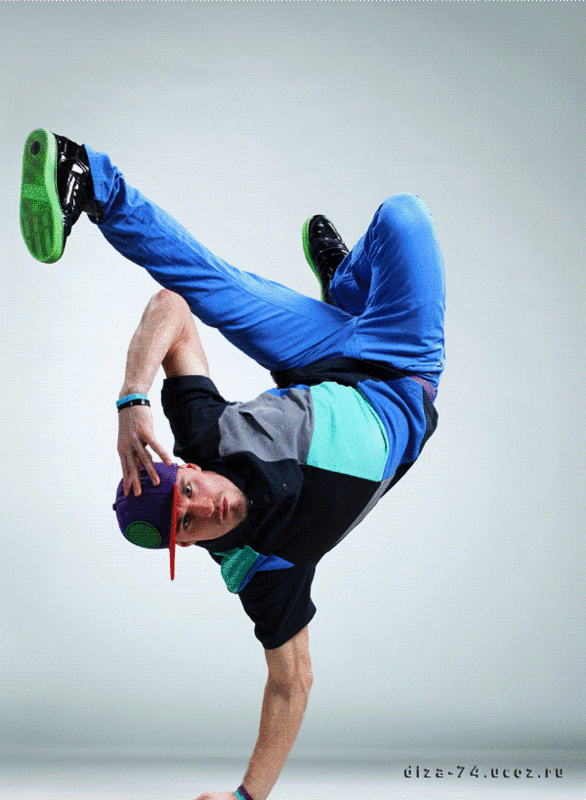 Later, women's parts also appeared, but only men are the soloists. Hopak owes its popularity to this day to the ensemble of Pavel Virsky.
Later, women's parts also appeared, but only men are the soloists. Hopak owes its popularity to this day to the ensemble of Pavel Virsky.
Irish dancing
The popular Celtic jig, fast reel and tap-influenced hornpipe are the varieties most commonly used in contemporary Irish productions. In the 90s, Irish folk dances simply blew up the world of choreography thanks to the Riverdance show. They tend to have many small movements with their feet, while their arms are often freely lowered down. The most spectacular performances look with the participation of dozens of dancers moving in sync.
Hawaiian dances
An ancient dance of the islanders, the exotic Hawaiian hula has gained wide popularity all over the world. With the help of dance, the Hawaiians express love for all living things, each movement carries its own special meaning. This dance has a healing and harmonizing effect, helps to strengthen posture, develop flexibility, improve the condition of joints, muscles and ligaments.
Georgian dances
Combine folk dances from different regions of Georgia. Most often, Georgian dances are performed by men as a competition or by couples to a romantic tune, and performances have their own classical scenario. The most popular among Georgian dances - Perkhuli and Khorumi - are included in the list of intangible cultural heritage of Georgia. Modern Georgian dance can be seen performed by troupes touring all over the world, the most famous of which is the Sukhishvili ballet.
Spanish flamenco
Flamenco was born in the south of Spain, combining Moorish, Gypsy and European styles in music and dance. Flamenco is performed by girls and women of different ages, dressed in long Spanish skirts. Most often solo to the accompaniment of a guitar and castanets, which are played by men. Flamenco is characterized by percussion of the rhythm with heels and peculiar enchanting movements of the hands, especially the hands.
Brazilian Capoeira
Capoeira originated as a martial art with elements of dance, but gradually moved from gyms and beaches to dance floors. Many amplitude movements, tricks and leg swings, reminiscent of strikes and sweeps, are the basis of this type of Brazilian art.
Many amplitude movements, tricks and leg swings, reminiscent of strikes and sweeps, are the basis of this type of Brazilian art.
Indian Natya
Natya is a theatrical performance with a certain plot that originated in ancient India. It is believed that this musical and choreographic art has a ritual character and underlies almost the entire culture of the Indian people. Of great importance are the costumes, the play with the eyes, the turns of the head and the movements of the hands.
Polish Krakowiak
Folk dance originated in the vicinity of Krakow. Initially performed only by men, and later by couples. In the 19th century, he moved from folk fairs and festivities to royal palaces, and later to the ballet stage. The dance is fast and playful with lots of jumps and turns.
Show all
1 shares
European program
Includes couple dances that originated and were popular at balls and parties in Europe. There is a strict dress code at ballroom dancing competitions: girls in long ball gowns, guys in special-cut tuxedos.
Waltz
The most famous among couple dances, familiar to many since school graduations. A dance of three steps, which are performed on each beat of the bar. In the mandatory program of sports ballroom dancing, there is a slow and fast Viennese waltz. Also, the waltz is the most popular dance of the newlyweds.
Tango
Although the tango is of Argentinian origin, it gained wide popularity in France. The European form has its own rules of performance, while the Argentine one is a complete improvisation. The music is also different - there are no drums in competitive dances. But the main distinguishing feature of Latin American tango from ballroom tango is passion and social orientation, which brought him worldwide fame.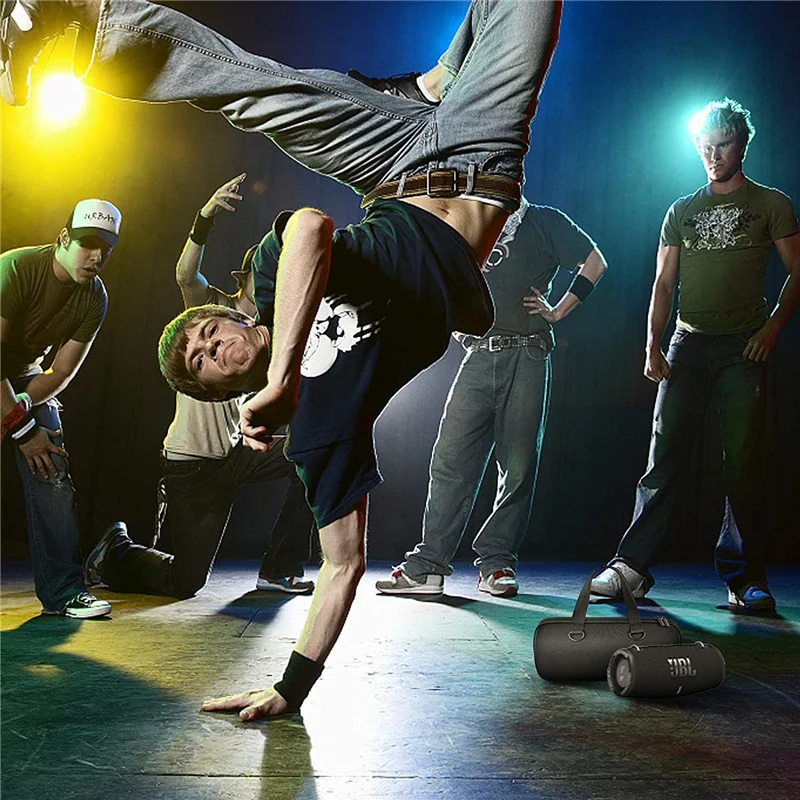
Foxtrot
The most difficult dance of the European program. It originated in the USA at the beginning of the 20th century, but with guest performers moved to the European continent. The smooth movements of the partners and the steps sliding on the floor create the impression of a complete unity of the couple.
Quickstep
Arose as a result of some musicians speeding up the foxtrot melody too fast in competitions.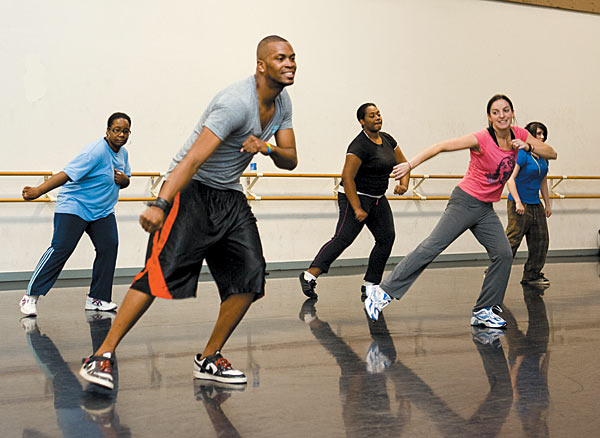 As a result, the organizers had to put restrictions on the tempo of the foxtrot, and the already formed new fast dance was called quickstep (translated from English as “quick step”). Quickstep is a light, perky dance with many different steps and jumps borrowed from other styles, performed at a very fast pace.
As a result, the organizers had to put restrictions on the tempo of the foxtrot, and the already formed new fast dance was called quickstep (translated from English as “quick step”). Quickstep is a light, perky dance with many different steps and jumps borrowed from other styles, performed at a very fast pace.
Show all
6 promotions
Samba
The dance became popular thanks to the annual Brazilian carnival, where numerous samba schools compete. One of the varieties of this national Brazilian dance was included in the ballroom dancing program. Music is characterized by syncom, polyrhythm and cross rhythms.
Cha-cha-cha
Probably the most popular dance in the Caribbean. It has a clear rhythm, which at one time attracted the attention of the French choreographer Pierre Lavelle, who brought cha-cha-cha to Europe. Initially, the dances of cha-cha-cha and danson did not differ, but later the music for cha-cha-cha accelerated and a new dance was born, while danson, on the contrary, slowed down, giving rise to a new direction of dance - rumba.
It has a clear rhythm, which at one time attracted the attention of the French choreographer Pierre Lavelle, who brought cha-cha-cha to Europe. Initially, the dances of cha-cha-cha and danson did not differ, but later the music for cha-cha-cha accelerated and a new dance was born, while danson, on the contrary, slowed down, giving rise to a new direction of dance - rumba.
Rumba
The slowest dance of the Latin American program comes from the poor neighborhoods of Cuba. This direction is considered the dance of slaves, in which they tried in every possible way to show their freedom. The dance technique is characterized by wide steps and smooth erotic movements.
Paso Doble
Spanish dance imitating a bullfight - a fight with a bull. The partner depicts a bullfighter, and the partner of the muletu - a red cloth in his hands. A rather rigid dance with expressive movements, in which the head of the performers is clearly fixed, and the body is constantly tense.
The partner depicts a bullfighter, and the partner of the muletu - a red cloth in his hands. A rather rigid dance with expressive movements, in which the head of the performers is clearly fixed, and the body is constantly tense.
Jive
An African American dance originating in the USA. It is always performed last in the compulsory competition program, because it is very fast and requires good endurance from the dancers in addition to mastery. The main movements of the legs are step-prefix-step from side to side. The weight of the body is always in front and is constantly shifted from side to side.
Bachata
If the first five dances have long been performed in the ballroom program, then bachata has nothing to do with these competitions. Born in the Dominican Republic, it became famous in our area not so long ago, but quickly gained popularity. The basic leg movements are four steps per beat with an emphasis on the last one, often at this moment the hip rises and falls. The main feature of bachata is a certain intimacy, because the partners are very close to each other.
Salsa
Almost all types of Latin American dances are mixed in salsa. In fact, initially it was pure improvisation, which, thanks to the characteristic melody, began to acquire unique features over time. In the dance, the upper body is practically motionless, the emphasis is on the waist, hips and legs.
In fact, initially it was pure improvisation, which, thanks to the characteristic melody, began to acquire unique features over time. In the dance, the upper body is practically motionless, the emphasis is on the waist, hips and legs.
Historical palace dances
Among the dances performed in royal palaces since the Renaissance, only the waltz has remained popular. Only he is included in the European program of dance competitions. However, today there are many interest clubs that are engaged in historical reconstruction. Often it is in such organizations that you can learn such dances and feel like a character in a historical film.
Street dance: street dancing
Hip-hop
Hip-Hop originated from the same name style of music and mixed all the street dances that existed at that time. It was a dance of freedom in which young people could express themselves, tell their stories. Each generation of dancers, each school brings their own style and zest to the dance technique. That is why the possibilities of this dance direction are almost limitless.
Shares
Style appeared in disadvantaged areas of American cities among the black population, as an alternative to street violence.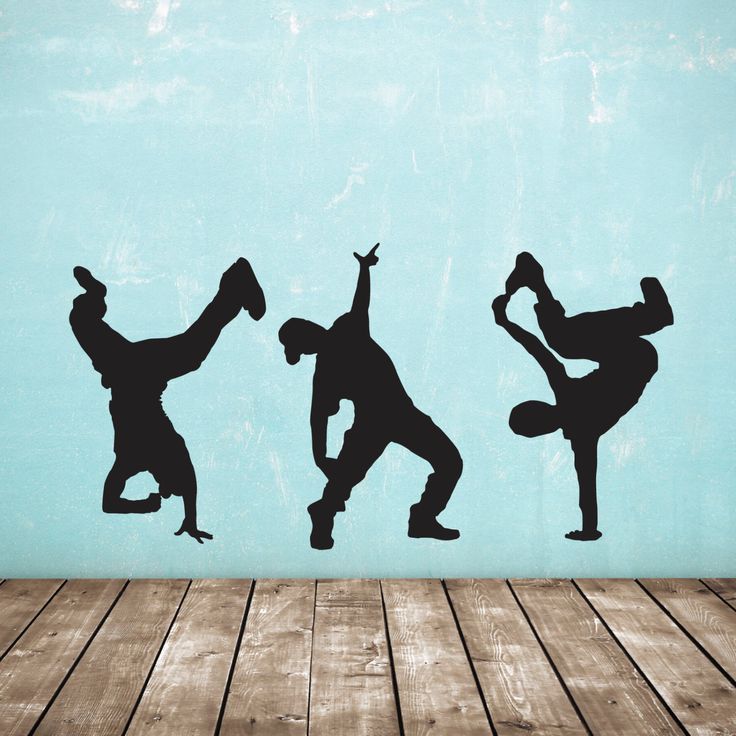 Instead of fights, teenagers and young people began to arrange dance battles, on which they could release the accumulated negative energy. The peculiarity of krump is that during the dance the whole body is as tense as possible, and the performer makes sharp jerky movements with his arms, legs, head and body. Naturally, krump is more popular with guys.
Instead of fights, teenagers and young people began to arrange dance battles, on which they could release the accumulated negative energy. The peculiarity of krump is that during the dance the whole body is as tense as possible, and the performer makes sharp jerky movements with his arms, legs, head and body. Naturally, krump is more popular with guys.
Breakdancing
The dance originated on the streets of the United States in the 1970s. Movements "on the floor" gradually developed into movements "on the floor". Break combines elements of Latin American dances, including capoeira, as well as martial arts and gymnastic tricks.
Jazz-funk
This style is dominated by small movements smoothly but quickly flowing into each other. Waves, slides, swings, turns, tilts and accents on the hips, shoulders and elbows. Jazz funk is a perky playful dance in which the performer seems to be flirting with the audience. Use subscriptions for Jazz-funk classes with a discount of up to 70% from Pokupon.
Jumpstyle
The name speaks for itself. The dance is dominated by shuffle-like steps and many jumps. Quite energetic in performance and requires good stamina. Originated in Belgian nightclubs with the advent of electronic music.
Originated in Belgian nightclubs with the advent of electronic music.
Uprock and toprock
The forerunners of breakdancing. Many fans say that without uprock and toprock there would be no break. Today they are almost never performed as a separate type, but are popular among breakers for intros and links. Aproc was danced to Latin American rhythms and arose from a mixture of all known styles of Latin dances.
Jerking
Jerking originated in the late 2000s and gained wide popularity thanks to singer Justin Bieber, who used movement in his improvisations on stage. This style is characterized by fast steps, jumps and squats, the main emphasis on leg movements. The dancers are recognizable by their skinny jeans and brightly colored sneakers.
This style is characterized by fast steps, jumps and squats, the main emphasis on leg movements. The dancers are recognizable by their skinny jeans and brightly colored sneakers.
Turfing
The dance originated in the state of Oakland among the African American population as a form of protest against the infringement of the rights of blacks and the brutality of the state police. Turfing is an improvisation on everyday topics, which includes robotic movements, freezing in different poses, sliding on the floor, waves and aggression characteristic of krump.
Dancehall
Jamaican party dance to reggae music, whose movements speak of everyday life and spiritual connections of people. Dancehall is an improvisation, so the set of steps used is constantly supplemented by each individual dancer. He is characterized by movement on the floor and movements of the whole body from the face and head to the feet and fingers. If you want to learn how to dancehall, look for subscriptions with a discount of up to 90% on Pokupon and come to class.
Wave
The name of the dance comes from the English "wave".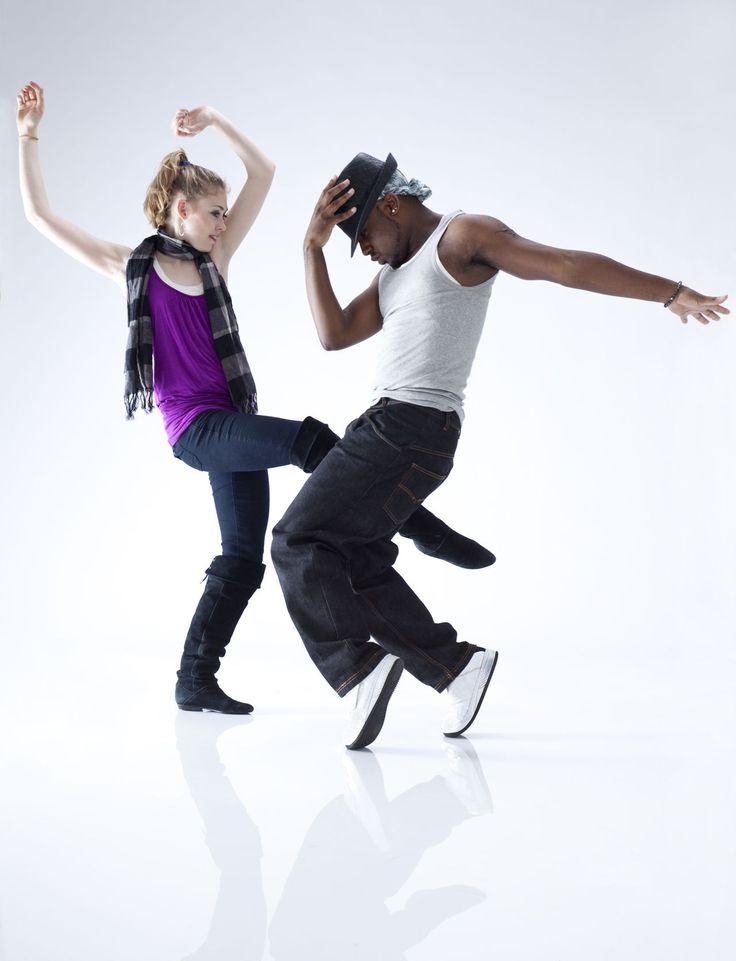 The dancer seems to flow from one position to another, working with absolutely the whole body. For the first time, "waves" began to be performed in popping, but later they emerged as a separate style.
The dancer seems to flow from one position to another, working with absolutely the whole body. For the first time, "waves" began to be performed in popping, but later they emerged as a separate style.
Locking
The dance originated by chance, when dancer Don Campbell wanted to improvise in a nightclub, but due to lack of experience he kept getting stuck and stuck. The audience decided that this was his trick and quickly adopted it, calling the pauses in the dance “locks”. If you see a dancer in striped stockings, gloves and a hat who constantly stops unexpectedly in the middle of a bunch, this is locking.
Show all
21 shares
Popping
To understand what popping is, it is enough to imagine the good old robot dance, but modernized in a professional way. The peculiarity of popping is precisely in mechanical movements, which are quite difficult to perform, since the whole body must be tense, and its individual parts move in isolation from others.
The peculiarity of popping is precisely in mechanical movements, which are quite difficult to perform, since the whole body must be tense, and its individual parts move in isolation from others.
Electric boogie
Originated from popping and other similar styles, but electric boogie dancers removed the freezing and jerky movements, making the dance more fluid. The style is based on waves, isolation and steps typical of popping.
Dub Step
Like house, dubstep emerged from a new popular style of music that incorporated all the latest trends and mainstream urban styles of the 2000s, especially electric boogie. The dance is quite emotional and aggressive with amplitude movements of the whole body.
The dance is quite emotional and aggressive with amplitude movements of the whole body.
Club Dance Styles
Shuffle
Basic dance moves taken from classical tap dance, simplified and reworked in a modern way. Instead of tapping, there are sliding steps and the effect of the performer hovering above the dance floor. This club dance is suitable even for beginners who want to "shine" in front of friends on the dance floor. Performed under house, techno and even trance.
Flex
Although the dance includes many moves from street dance, it is not derived from hip hop but from Jamaican dance to reggae music. The emphasis is on amplitude energetic movements and special plastic movements - the dancer seems to be constantly wriggling with his whole body.
The emphasis is on amplitude energetic movements and special plastic movements - the dancer seems to be constantly wriggling with his whole body.
Electro-Dance
The dance originated with the popularization of electro-house music in nightclubs. In electro-dance, the performer's body constantly sways from side to side, the dancer performs simple steps and many amplitude or small movements with his hands in all planes. You may also know this dance under the Tectonic brand. Electro dance has become the progenitor of many club dance styles.
C-walk
Dance migrated from the streets to nightclubs. As in the shuffle, the emphasis is more on foot movements - the dancer writes out letters and even whole words on the floor. When the dance first appeared, it used only movements that were understandable to a very narrow circle of performers. Some of the movements of this dance are even used in the famous game Fortnite (FORTNITE), famous for the dance steps of the characters.
As in the shuffle, the emphasis is more on foot movements - the dancer writes out letters and even whole words on the floor. When the dance first appeared, it used only movements that were understandable to a very narrow circle of performers. Some of the movements of this dance are even used in the famous game Fortnite (FORTNITE), famous for the dance steps of the characters.
Runway dance
Vogue
The basic movements and forms of dance are taken from fashion catwalks: model walking and posing. All movements are exaggerated and emotional. The dance is characterized by fast arm swings, pretentiousness and many rotations. Ideal for house music.
Go-Go
Jacket dance in nightclubs. It is designed to turn on the audience, set the rhythm and fill the hall with energy. The history of dance goes back to the 1960s, when bar owners hired dancers to dance on bar counters, special podiums, or even in cages suspended from the ceiling in order to attract male audiences to clubs. After the opening of the first nightclubs, go-go dancers migrated there. Fast movements with a wide amplitude are the basis of the dance. Often the dancers wear minimal clothing or very colorful costumes that complement the atmosphere of the club.
Waacking
A mixture of Latin American and African motifs in the choreography.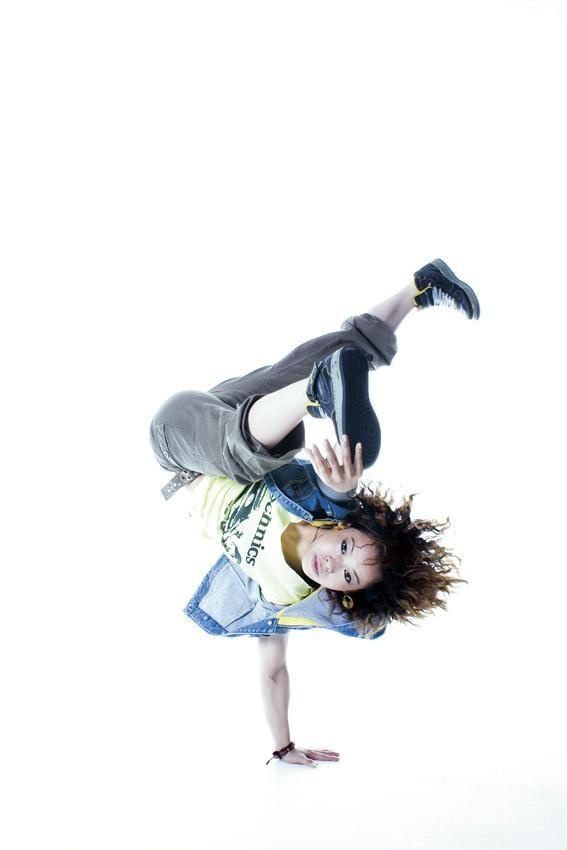 Waking appeared back in the mid-70s in American gay clubs. Unlike other dances in the disco style, it is characterized by a special femininity. The dancer performs simple steps with his feet, and the main emphasis in waking is on the choreography of the hands.
Waking appeared back in the mid-70s in American gay clubs. Unlike other dances in the disco style, it is characterized by a special femininity. The dancer performs simple steps with his feet, and the main emphasis in waking is on the choreography of the hands.
Dances of seduction
Strip plastic
A dance that moved from strip bars to choreographic halls. And strip plastic is not a striptease. You are not taught to undress, but are taught plastic and feminine movements in the dance. In addition to other advantages, strip plastic is good for health, because it includes elements of stretching, which is indispensable for muscle plasticity and flexibility at any age. Plus, strip plastic will perfectly complement and diversify family life 😉
Belly dance
Classic oriental dance of seduction Belly Dance, which the concubines danced to their sultans. Belly dancing is not as explicit as American or European dances for seduction, but the incredible plasticity of the body and the bewitching movements of the hands undoubtedly fascinate men. If you can still meet representatives of the opposite sex on strip plastic or pole dancing, then oriental dances are a truly feminine art. There is a modern tribal direction, based on improvisation, combining the movements of belly dance, flamenco and Indian folk dances.
Pole-dance
Pole dance, Exotic or pole dancing have ceased to be something vulgar, and have turned into a sport and a real acrobatic art. In addition to unusual choreography, you have the opportunity to improve your stretching and pump your muscles, because in order to stay on the pole for a long time, you will need strong, strong muscles and good physical preparation. Training in pole dancing takes place in specially equipped halls, where pylons, air canvases (ribbons) and rings are installed.
Training in pole dancing takes place in specially equipped halls, where pylons, air canvases (ribbons) and rings are installed.
Twerk
The main focus of twerk is on the buttocks, booty movements: circular, up and down, sitting, standing. The main dance element is taken from the classic reggaeton - an African American dance that preceded hip-hop, and unusually liberates and pumps sexuality. It looks very dynamic, bold and becomes incredibly popular among the youth. You can start trying from the age of 16.
You can take your first choreography lesson at any age - it's never too late to start dancing. If a desire has awakened inside you and your physical form allows, choose the direction you like and enroll in the best dance schools in your city with a discount from Pokupon.